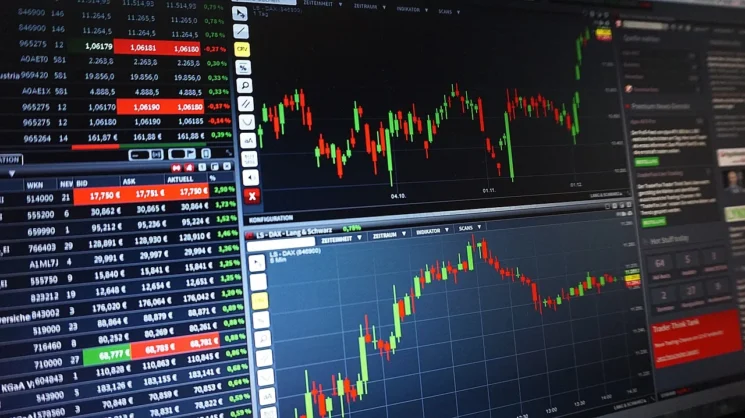This article will help you understand the meaning of binary options trading; you will get illustrations to help you understand better. Then, we will explain in-depth why binary options are notable or popular among new and experienced traders and investors.
In This Post
Definition of binary options

Binary options are a type of trading (options contract) with two likely outcomes: the trader or investor might be rewarded with a predetermined profit for a right decision, or the trader or investor may lose the total investment for a wrong decision. These outcomes are defined by the investor’s forecast of an underlying asset. Binary options can be illustrated as simplified options contracts with fixed rewards and risks. Let us have a good example of binary options: an investor invests in a binary option contract valued at $100 with a promise of a 65% return on investment if the company’s stock rises from a present trading price of $30 per share to $35 per share during a trading period. If this company’s share rises, the payout would be $165 ($100— initial investment + $65— 65% ROI). On the other hand, if the stock does not increase from $30 to $35 as predicted, there would be zero ($0) payout, and the investor would lose the initial investment($100).
Binary options popularity in trading and investment
Binary options are booming, and more investors and traders are getting involved. This popularity and wide acceptance might have made you curious about what makes binary options so popular. There are many reasons why binary options are popular. Let’s take lessons from Callie Cox, the U.S.-based investment analyst with an expert investment analysis role at the social investment network eToro. Callie Cox had an interview with the popular online finance magazine, Money, where she said, “The bear market has forced a lot of investors to think about the downside. They’re more aware of the risks, so they’re more likely to hedge.” These words are based on the market reality, several traders and investors are hedging, and options trading is a promising platform for hedging. Put options, a type of binary you will learn about soon, have equipped traders and investors with an option to move from the stock market to hedging. With put options and hedging, traders or investors can confine their losses when the option’s strike price is above the present price of the asset.
How binary options work

Here, we explain how binary trading options work, the types of binary options, and their characteristics.
Explanation of how binary options trading works
Binary options entail one key question, will the price of this asset rise or decrease at this given time? Four (4) elements (or characteristics of binary options) define how binary options contract work:
The strike price
The strike price is paramount for traders to carry out trades on binary options. Traders must consider whether the underlying market would go below or above the strike.
The expiration date and time
The expiration date and time or expiry date and time is the period that starts from the moment an investor ‘purchases’ the option contract till the trade ends or closes. An expiration date and time could be as lengthy as 30 days or as short as 60 seconds.
Fixed returns
Fixed returns are a predetermined amount (profit or loss) that traders get as an outcome of their forecast. The fixed returns are always known before making a trade, and traders always get their returns at expiration.
The underlying market
The underlying market is the market where a trader chooses to trade. This could be events, stock indices, forex, or commodities. IQCent offers these four markets. You can make forecasts with binary options contracts on any of them with IQCent. You can contact IQCent’s Support Group to get more information or carry out trade on our trading platform. Binary options are fun and profitable, explore and trade today.
Types of binary options

There are two (2) types of binary options types: call and put options.
Call options
Call options are financial contracts that equip the buyer with the freedom (but not the duty) to buy the underlying asset (such as events or commodities) at a defined price (the strike price) within a certain time frame.
Put options
Put options (the direct opposite of a call option) give the holder the right to sell the underlying asset at the strike price. The binary options contracts’ simplicity makes them a good trading curtain-raiser for new or inexperienced traders and investors. The simplicity also makes it easy for experienced traders to form a promising trading strategy and plan that can result in profit.
Accessibility

There are numerous platforms to trade options. A major advantage of binary options trading is the opportunity to make a profit regardless of the market trend. Traders are not limited. They could sell or buy assets depending on their market predictions. You could also close a trade early where you want to make a profit or place a different trade if you wish to curtail your losses. Binary Options Strategies Binary options strategies are techniques and methods used by traders to maximize their profits and minimize their losses in trading. A good strategy can help traders make informed decisions based on market trends and conditions, and improve their overall success rate in binary options trading.
There are many different types of strategies, ranging from simple and straightforward to more complex and sophisticated. Some popular strategies include trend following, news trading, hedging, and risk reversal. These strategies can be combined or customized to fit the individual trader’s goals and preferences. A successful strategy typically involves a combination of technical and fundamental analysis, as well as a sound understanding of market psychology and risk management principles. Traders should also be aware of the potential risks and drawbacks of each strategy, and adjust their approach accordingly. Ultimately, the key to success in binary options trading lies in developing a sound and effective strategy, sticking to it consistently, and continually learning and adapting to changing market conditions.